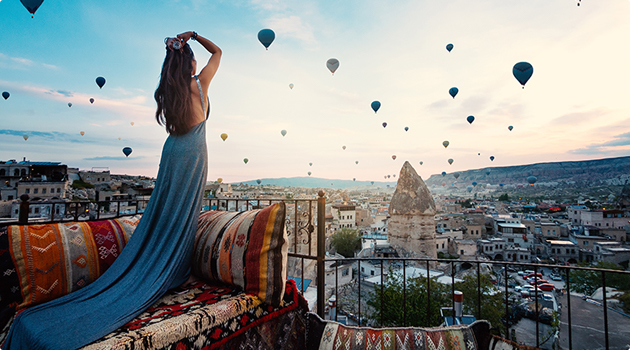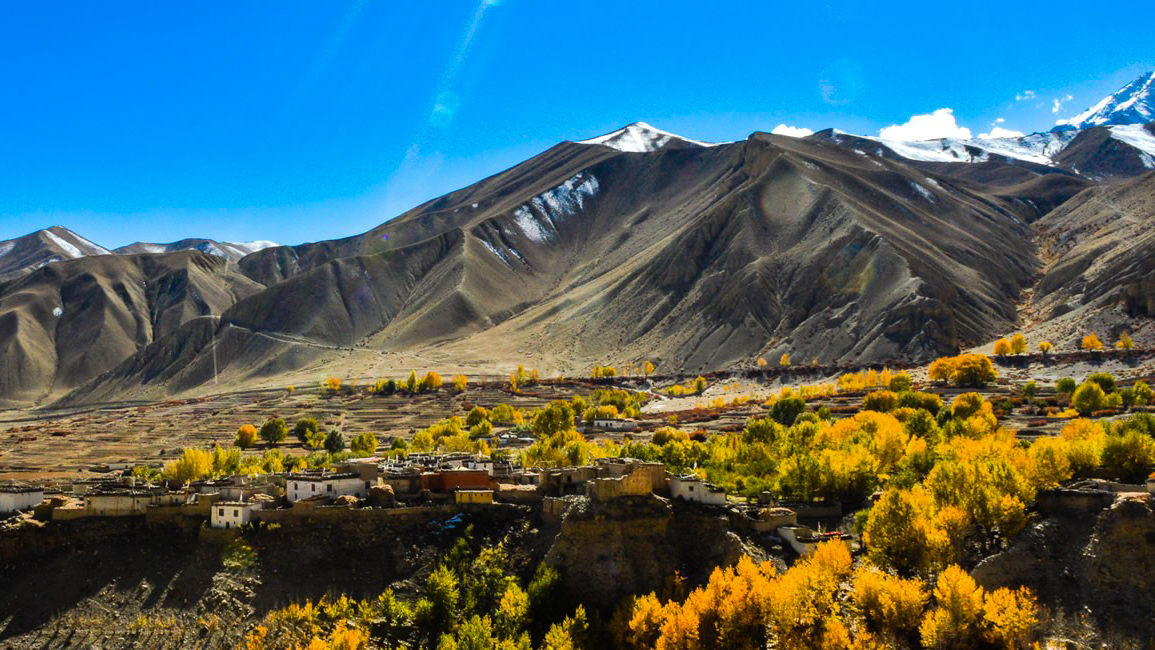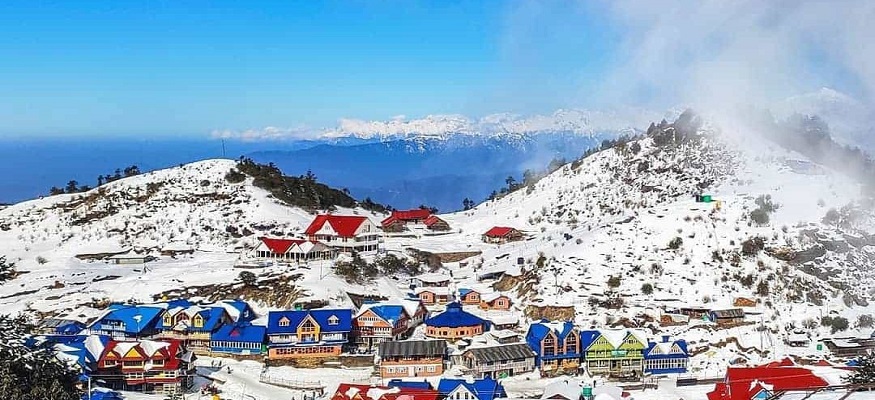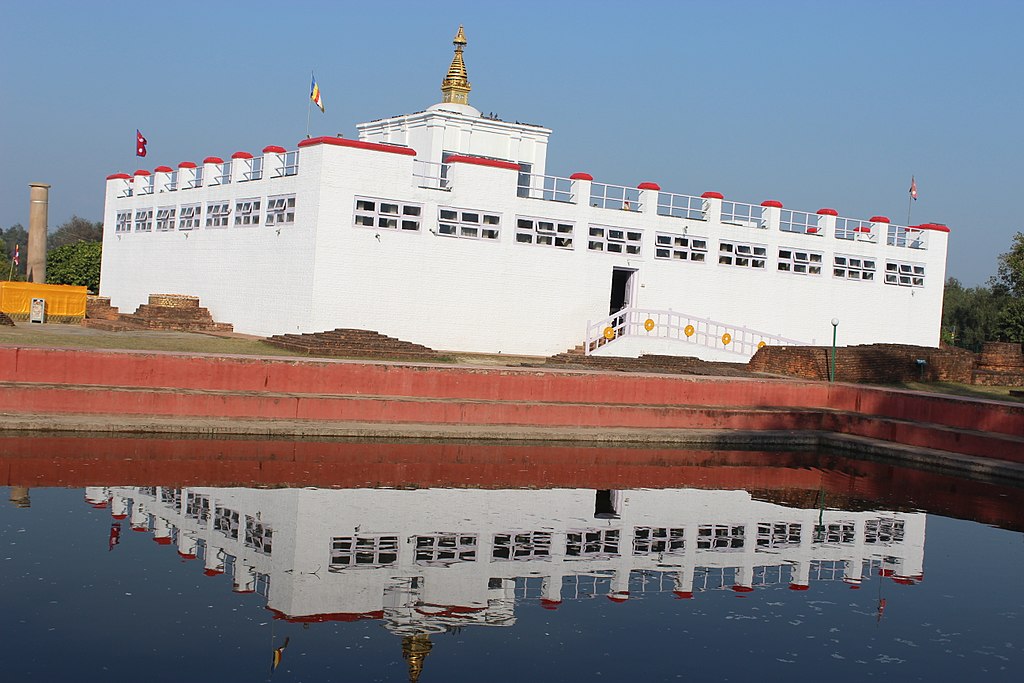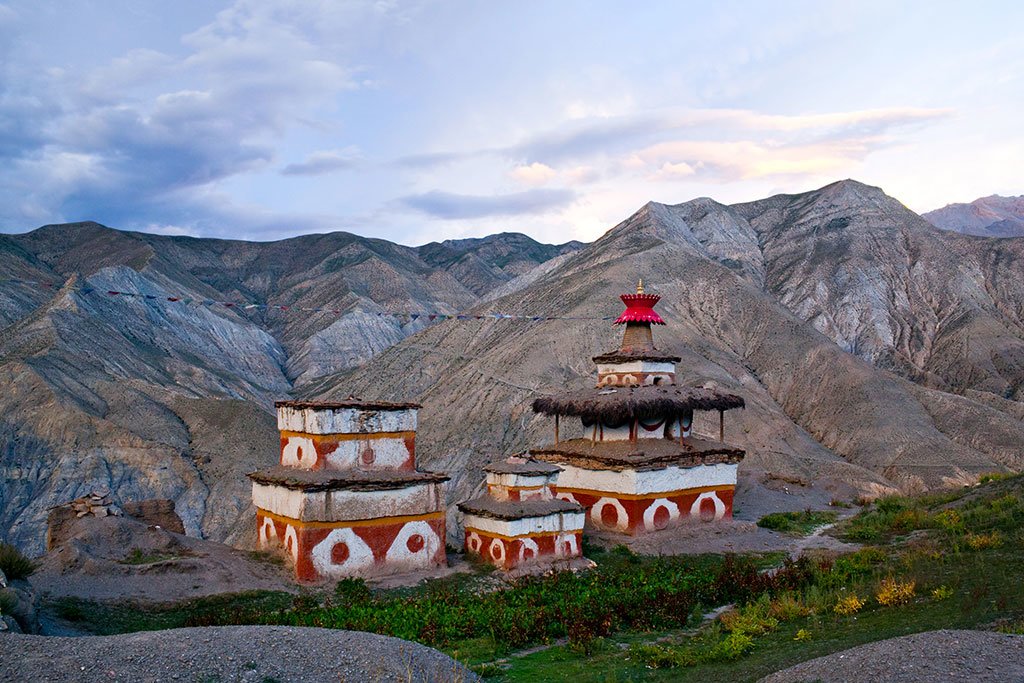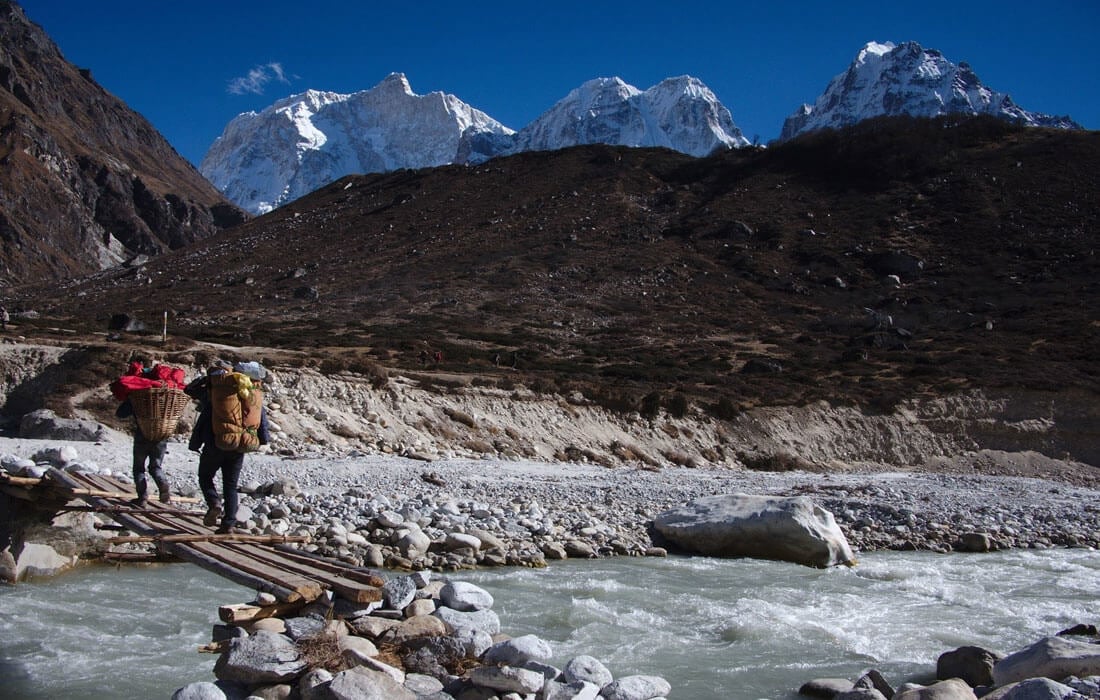 About this Trip
About this Trip
The Annapurna Circuit represents the quintessential Himalayan trek, offering a journey of extraordinary completeness that has justifiably earned its reputation as one of the world's finest mountain adventures. What sets this trek apart is its remarkable diversity and sense of expedition, creating a genuine journey through worlds that seem impossibly varied for a single trek.
The circuit's genius lies in its grand clockwise arc around the entire Annapurna massif, allowing trekkers to experience a complete spectrum of Himalayan environments. Beginning in the lower subtropical regions, you ascend gradually through dense forests and terraced farmland, gaining altitude steadily to cross high mountain passes, before descending through the world's deepest gorge flanked by towering 8,000-meter peaks. This circular route creates not just physical variety but a profound sense of journey and completion that linear treks cannot match.
The cultural dimension is equally remarkable. The circuit traverses regions historically connected by ancient trade routes between Tibet, China, and India, creating a fascinating tapestry of cultural influences. The eastern portions feature predominantly Hindu villages with intricate woodwork and traditional farming practices. As the trail climbs, Buddhist influences increase, with prayer wheels, mani walls, and monasteries becoming common features. Beyond Thorong La Pass, the arid landscapes of Mustang showcase unique architectural styles more reminiscent of Tibet than Nepal, with flat-roofed whitewashed houses and distinctive religious iconography.
Physically, the trek presents a perfectly calibrated challenge. The gradual ascent over multiple days provides excellent natural acclimatization, with the crossing of Thorong La Pass offering a challenging but achievable goal for reasonably fit trekkers. The circuit's infrastructure of teahouses allows for comfortable progression without requiring camping equipment, making the full journey accessible while maintaining its adventurous character.
Perhaps most distinctively, the Annapurna Circuit creates a narrative arc that trekkers experience deeply. The gradual build-up and anticipation toward the Thorong La crossing, followed by the dramatic descent and changing landscapes of the western portions, creates a natural storyline that many trekkers describe as transformative. This sense of pilgrimage and progression through dramatically changing worlds generates powerful memories and connections to the landscape that last long after the journey's completion.
The Annapurna Circuit represents the quintessential Himalayan trek, offering a journey of extraordinary completeness that has justifiably earned its reputation as one of the world's finest mountain adventures. What sets this trek apart is its remarkable diversity and sense of expedition, creating a genuine journey through worlds that seem impossibly varied for a single trek.
The circuit's genius lies in its grand clockwise arc around the entire Annapurna massif, allowing trekkers to experience a complete spectrum of Himalayan environments. Beginning in the lower subtropical regions, you ascend gradually through dense forests and terraced farmland, gaining altitude steadily to cross high mountain passes, before descending through the world's deepest gorge flanked by towering 8,000-meter peaks. This circular route creates not just physical variety but a profound sense of journey and completion that linear treks cannot match.
The cultural dimension is equally remarkable. The circuit traverses regions historically connected by ancient trade routes between Tibet, China, and India, creating a fascinating tapestry of cultural influences. The eastern portions feature predominantly Hindu villages with intricate woodwork and traditional farming practices. As the trail climbs, Buddhist influences increase, with prayer wheels, mani walls, and monasteries becoming common features. Beyond Thorong La Pass, the arid landscapes of Mustang showcase unique architectural styles more reminiscent of Tibet than Nepal, with flat-roofed whitewashed houses and distinctive religious iconography.
Physically, the trek presents a perfectly calibrated challenge. The gradual ascent over multiple days provides excellent natural acclimatization, with the crossing of Thorong La Pass offering a challenging but achievable goal for reasonably fit trekkers. The circuit's infrastructure of teahouses allows for comfortable progression without requiring camping equipment, making the full journey accessible while maintaining its adventurous character.
Perhaps most distinctively, the Annapurna Circuit creates a narrative arc that trekkers experience deeply. The gradual build-up and anticipation toward the Thorong La crossing, followed by the dramatic descent and changing landscapes of the western portions, creates a natural storyline that many trekkers describe as transformative. This sense of pilgrimage and progression through dramatically changing worlds generates powerful memories and connections to the landscape that last long after the journey's completion.

From $0
Price Varies from Group Size
Success
Here goes about why the success toast occurred.
 Itinerary
Itinerary
Arrival in Kathmandu (1,400m)
Kathmandu to Besisahar (760m)
Besisahar to Ngadi (930m)
Ngadi to Jagat (1,300m)
Jagat to Dharapani (1,860m)
Dharapani to Chame (2,670m)
Chame to Upper Pisang (3,300m)
Upper Pisang to Manang (3,540m)
Acclimatization day in Manang
Manang to Yak Kharka (4,018m)
Yak Kharka to Thorong Phedi (4,450m) or High Camp (4,850m)
Crossing Thorong La Pass (5,416m) to Muktinath (3,800m)
Muktinath to Jomsom (2,720m)
Jomsom to Marpha to Kalopani (2,530m)
Kalopani to Tatopani (1,190m)
Tatopani to Ghorepani (2,840m)
Ghorepani to Poon Hill (3,210m) to Tikhedhunga (1,570m)
Tikhedhunga to Nayapul to Pokhara
Pokhara
Pokhara to Kathmandu
Departure from Kathmandu
 Services
Services
Includes
- Specialized bilingual guide familiar with the Annapurna region
- Private Transport where applicable
- Tourist bus/flight between Kathmandu and Pokhara
- Daily meals on the trek: breakfast, lunch, and dinner
- Services of an experienced guide and porter during the trek
- All essential trekking permits, including ACAP (Annapurna Conservation Area Permit) and TIMS
- Accommodation throughout the trek (teahouses)
Excludes
- Additional accommodation due to weather delays or early completion
- Comprehensive travel and medical insurance for the trek
- Gratuities for the guides, porters, and trekking support staff
- International flights and entry visa fees for Nepal
- Personal trekking equipment and gear (sleeping bags, down jackets, etc.)
- Extra food and drinks beyond the standard meals provided
- Hot showers and battery charging at teahouses (pay per use)
- Costs associated with emergency evacuation or alternate routes if needed
 Good to Know
Good to Know
Prepare physically with cardio and hill training for 2-3 months before your trek. The Thorong La Pass crossing is strenuous and requires proper acclimatization—never rush this section and be willing to adjust your schedule if altitude symptoms develop. Pack for extreme temperature variations from hot lowland days to potentially below-freezing conditions at high altitude. ATMs are available in larger settlements like Jomsom and Manang but become scarce elsewhere; carry sufficient cash. Road construction has affected parts of the traditional route, but alternative trails often preserve the trekking experience. Consider bringing diamox as a preventative medication for altitude sickness after consulting your doctor. Water purification tablets or filters are essential to reduce plastic waste and costs.
Wildlife Encounters
While trekking, keep an eye out for:
Himalayan tahr and blue sheep (bharal), Yellow-throated marten, Himalayan weasel, Pika (small rabbit-like mammals), Jackals and foxes, Over 500 bird species including:,Lammergeier (bearded vulture), Himalayan griffon, Impayan pheasant (danphe), Various eagles and accentor), Numerous butterfly species in lower forested regions, Snow leopard (extremely rare sightings in remote areas)
 Reviews
Reviews
 FAQs (Frequently Asked Questions)
FAQs (Frequently Asked Questions)
Your queries are answered.
What is the best time of year for the Annapurna Circuit?
October to early December offers the most stable weather and clearest mountain views. March to May features spectacular rhododendron blooms but may have hazier afternoon visibility. Winter (December-February) brings cold temperatures and potential snow at Thorong La, requiring additional preparation and equipment. The monsoon season (June-September) brings leeches and difficult trail conditions in the lower sections, with potential landslides.
How has road construction affected the Annapurna Circuit?
Road development has reached both Manang on the eastern side and extends up from Muktinath on the western side. This has shortened the traditional route, but alternative trails have been developed that often follow higher ridgelines away from the roads. Many trekkers now start further up the valley at Chame or Dharapani, and some finish at Jomsom, but carefully planned itineraries still capture the essence of the original journey.
What permits do I need for the Annapurna Circuit?
You'll need the Annapurna Conservation Area Permit (ACAP) and TIMS (Trekkers' Information Management System) card. These can be arranged through your trekking agency or obtained in Kathmandu at the Nepal Tourism Board office or in Pokhara.
How do I prepare for the altitude on the Annapurna Circuit?
Follow the itinerary's built-in acclimatization days, particularly in Manang. The "climb high, sleep low" principle is effective—take short hikes to higher elevations on rest days. Stay hydrated, avoid alcohol, and consider consulting your doctor about Diamox as a preventative medication. Most importantly, communicate any symptoms to your guide immediately and be willing to delay crossing Thorong La if needed.
What type of accommodation exists on the circuit?
Teahouses of varying quality exist throughout the trek. Lower elevations and major stops like Manang and Jomsom offer relatively comfortable facilities with private rooms, dining areas, and sometimes hot showers and internet. Higher elevations and smaller settlements provide more basic accommodation with shared bathrooms and limited amenities. All offer warm meals and a place to sleep, but comfort levels decrease with altitude.
Is it possible to trek the Annapurna Circuit independently?
Yes, the circuit is well-established with clear trails and regular teahouses, making independent trekking possible for experienced hikers. However, a guide enhances safety when crossing Thorong La Pass and provides cultural insights throughout the journey. Porters make the trek more comfortable by carrying the bulk of your gear. Independent trekkers still need to arrange their own permits.
How does the Annapurna Circuit compare to Everest Base Camp trek?
The Annapurna Circuit offers greater ecological and cultural diversity than the Everest region, transitioning through more distinct climatic zones and ethnic communities. The circuit's highest point (Thorong La at 5,416m) is comparable to Everest Base Camp's altitude (5,364m), but the circuit requires crossing this high point rather than camping at it. The Annapurna region typically has fewer trekkers than the Everest region, particularly on alternative trails away from roads.
What are the options for combining the Annapurna Circuit with other treks?
Many trekkers combine portions of the circuit with side trips such as Tilicho Lake (world's highest lake), Ice Lake above Manang, or a detour to Upper Mustang (requires additional permits). You can also continue from Ghorepani to Annapurna Base Camp, creating a comprehensive Annapurna experience over 25-30 days. Another option is the "Jomsom Trek," focusing only on the western portion of the circuit for those with limited time.
How reliable is communication along the Annapurna Circuit?
Major settlements including Manang, Jomsom, and Muktinath have relatively reliable cell coverage and often WiFi (sometimes for a fee). Most villages at lower elevations have some connectivity, but it becomes sparse and unreliable between Manang and Muktinath, particularly around Thorong La Pass. Local SIM cards with data work surprisingly well in many areas but cannot be relied upon throughout the trek.
How much extra money should I budget for the trek?
Beyond the package cost, budget approximately $15-20 per day for additional expenses like hot showers ($2-5), battery charging ($2-5), WiFi access where available ($3-7), bottled water (or bring purification methods), snacks, hot drinks, and potential side excursions. Higher elevations command higher prices due to transportation costs. Some trekkers also enjoy sampling local apple brandy in the Jomsom area or cappuccinos in the larger settlements.
What unique cultural experiences can I expect on this trek?
The circuit passes through incredibly diverse cultural regions, from Hindu farming communities in the lower elevations to Tibetan-influenced Buddhist settlements in the higher regions. Cultural highlights include visiting ancient monasteries in Manang and Muktinath, observing religious ceremonies, learning about traditional medicinal practices, experiencing distinct architectural styles, and potentially witnessing seasonal festivals that vary by region and time of year. The Thakali culture in the Kali Gandaki valley is particularly distinctive, with unique culinary traditions and historical trading practices.
